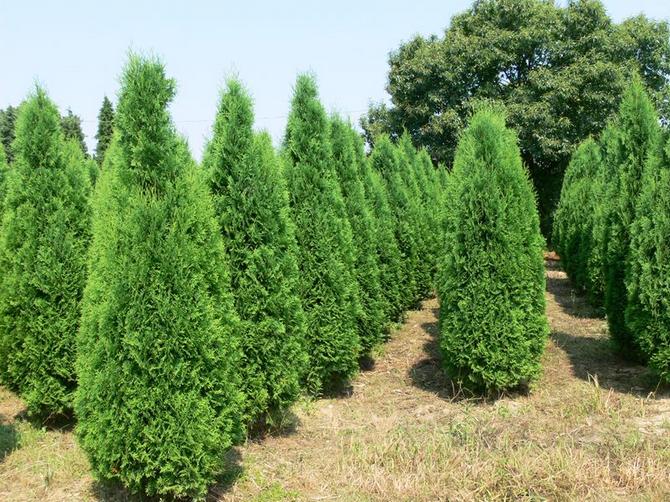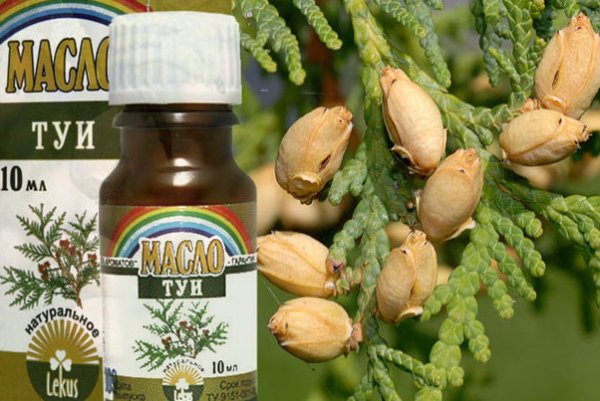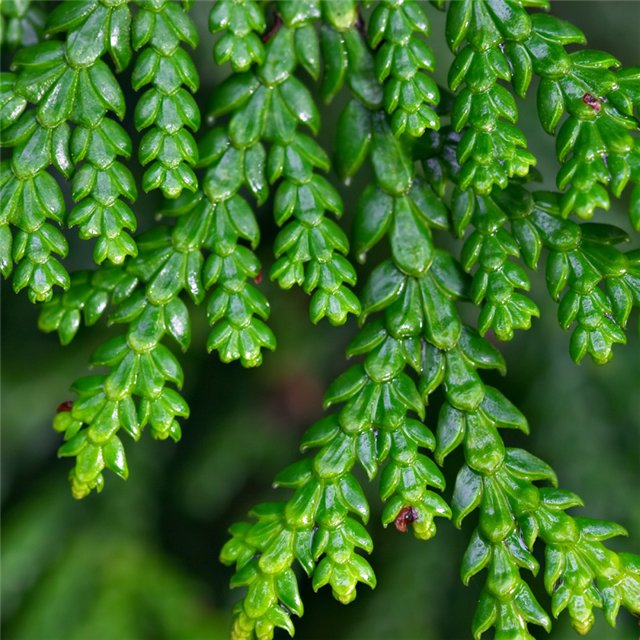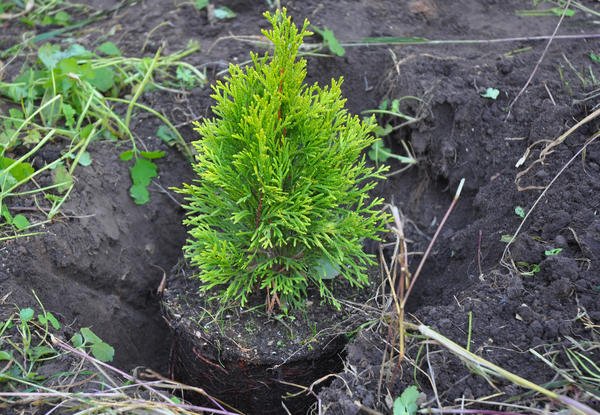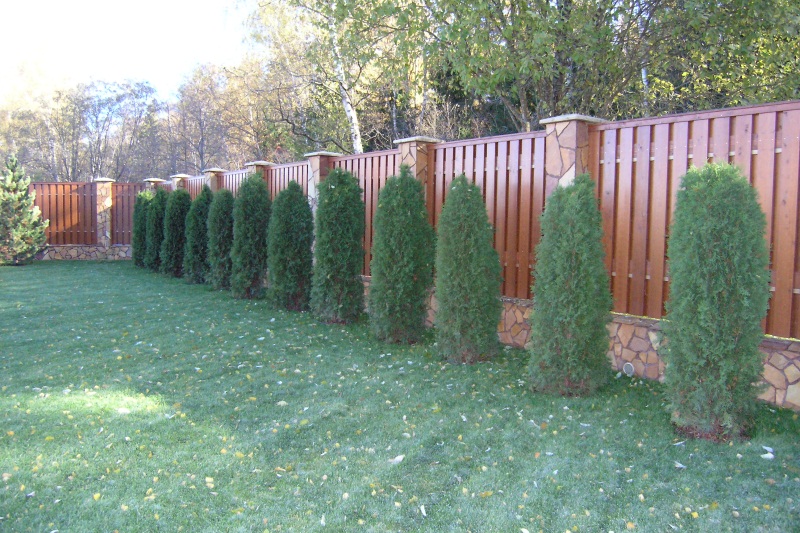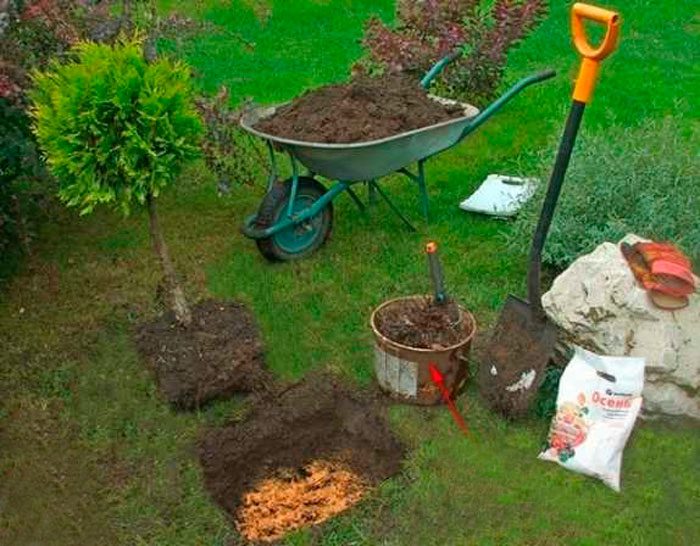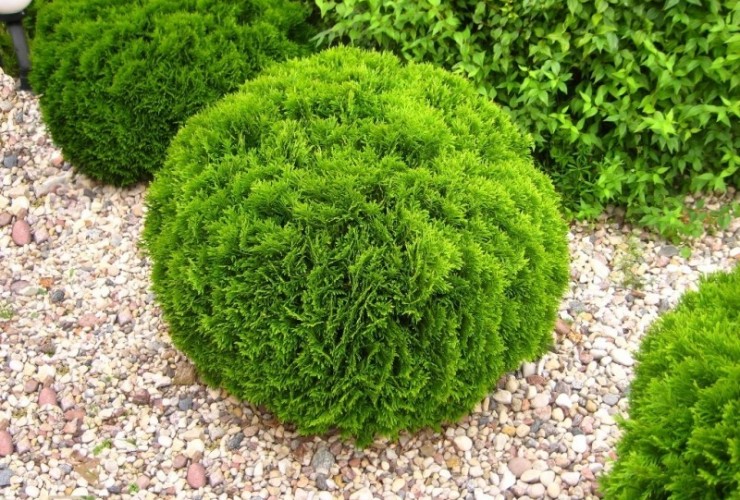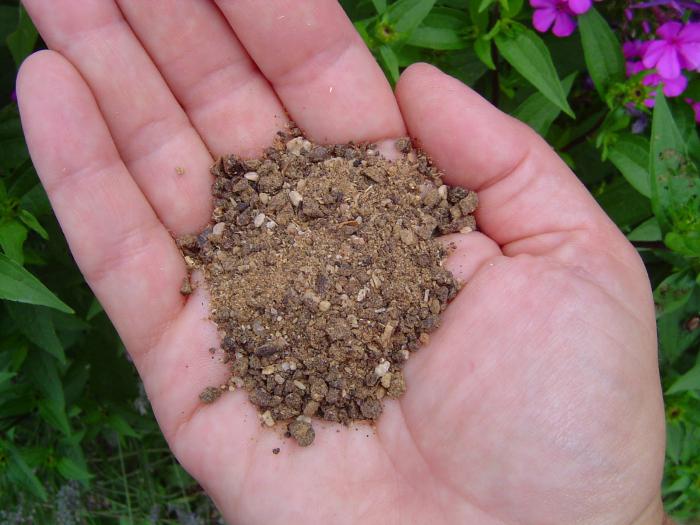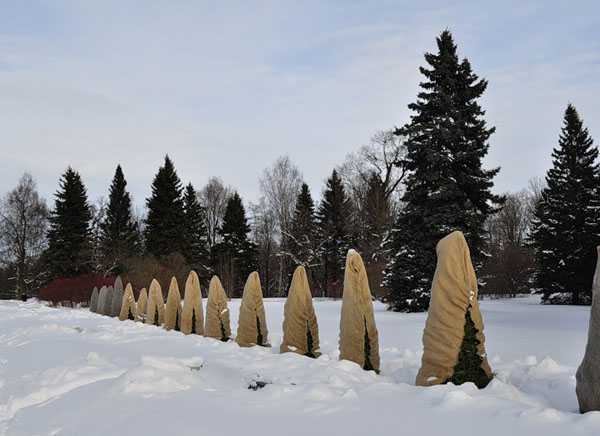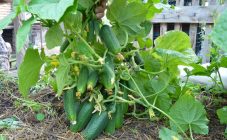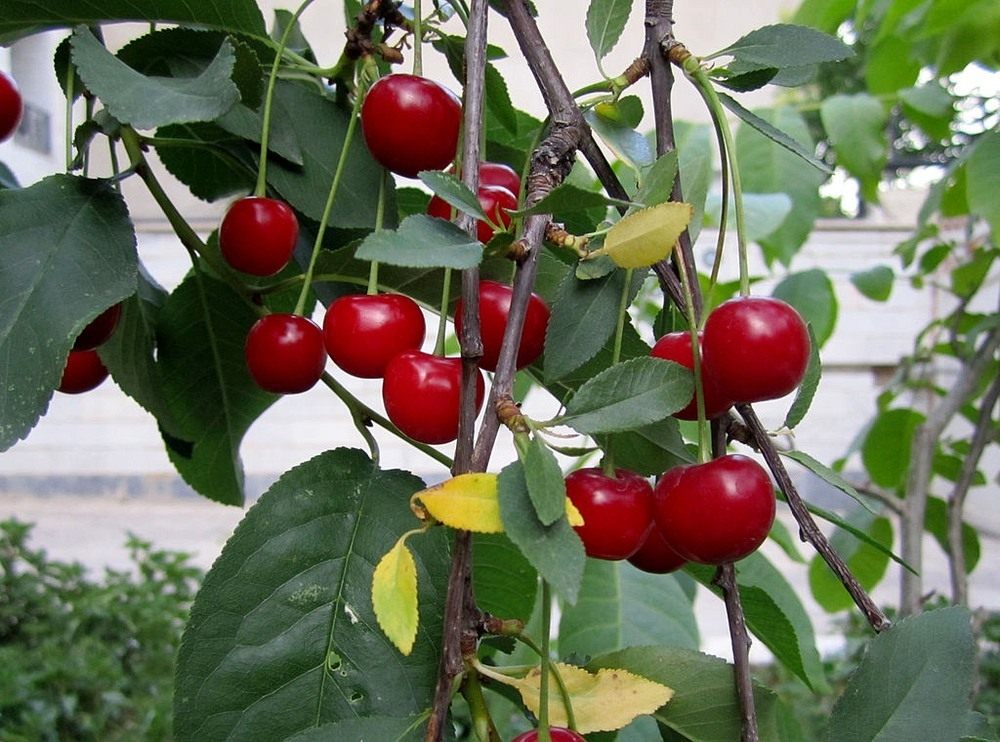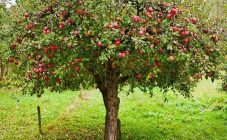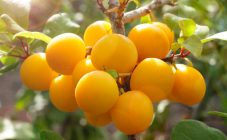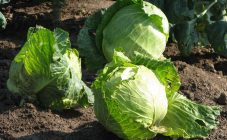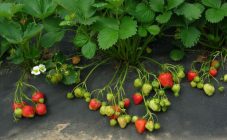Before thinking about how to plant thuja, you need to understand what kind of plant it is and what are its features. Thuja, or an outdated version of thuja, translated from Latin means "life tree", refers to the genus of gymnosperms from the Cypress family. It is popular for landscaping and hedging. Thuja creates a special comfort, which is why many want to see it on their personal plot.
Short description
A beautiful tree that may resemble a juniper to some is called a thuja, and it is:
- evergreen specimen;
- grows up to 20 m in height and 70 cm in diameter;
- monoecious plant.
A young seedling has soft and needle-like leaves, and in adults they are transformed into scaly and opposite criss-cross. The fruits are oblong cones, but they can be oval, on which there are 2-6 pairs of scales, and the uppermost pair is sterile. The rest may contain 2-3 flat-shaped ovules with narrow paired wings. Ripens in autumn.
It is possible to grow thuja in the Moscow region and in any other region without much effort, since the culture is not too whimsical to the conditions in which it will germinate. The plant is resistant to smoke, and therefore thuja is planted in summer as landscaping in industrial areas. Cultivation is carried out in the open field. The most important thing is that the plant is frost-resistant. Thuja Occidentalis and Plicata are considered the most common species.
Why is planting a thuja in the summer at the dacha so popular? Culture is prized not only for its attractive appearance, but also for its many beneficial properties. For example, the wood of a plant contains:
- aromodendrin;
- toxifollin;
- essential oil of yellow color, which has a pleasant aroma.
Oil is obtained under industrial conditions by distilling thuja foliage and contains such useful components as:
- pinen;
- caryophyllene;
- sesquiterpene hydrocarbon fidren;
- zedrol;
- pinipicrin;
- pillin;
- pinin;
- thujone;
- tannin;
- resin;
- seskyterpene alcohol.
The genus contains 5 species of monoecious trees and shrubs that grow in North America and East Asia. Among the most popular varieties are thuja:
- Korean;
- western;
- folded;
- giant;
- Japanese;
- standish;
- Sichuan.
To the genus of this plant is very close such a culture as tuevik dolovity, which has thicker foliage and strong cones, as well as articulated tetraclinis, which has leaves of a quadrangular shape of an unsmoothed appearance, and they have thick woody scales. The eastern thuja is very similar to them, most often planted for the purpose of creating decorative gardens. In the Tuyev family, it is also called the eastern flatfish.
For planting, soil is suitable, which contains:
- peat;
- clay;
- dry sandy loam;
- drainage.
If the soil is waterlogged, it will be necessary to drain 15-20 cm. In the case of a completely swampy area, it will be necessary to lay pipes in the planting pits. When buying and transplanting seedlings, you need to pay attention that the root is surrounded by an earthen ball. It is also important that the bush is 2-3 years old, since it is at this age that it takes root faster.
Landing
When is it better to plant thuja so as not to stress the plant and not harm it? This culture will be able to take root on the site regardless of the season, with the exception of winter, of course. But experienced gardeners recommend planting in the spring, from April to May.
Why is spring the best time to plant thuja? To get the most chic result, since then an evergreen shrub:
- less susceptible to diseases and pests;
- actively growing and developing;
- perfectly adapts to the surrounding atmosphere, in particular, soil, climate and neighbors on the site.
How to plant thuja correctly so that it grows and develops actively? An ideal place would be one with both sun and partial shade. Because the effect of direct rays, it will burn out, and in the shade the crown will begin to thin out, growth will decrease and immunity will weaken, and the tree itself will gradually wither, it will not endure the winter and cold, and then it will simply die. In addition, it is worth choosing windless areas and it is desirable that underground waters lie shallow nearby.
Step-by-step instructions on how to plant thuja:
- First, a pit is prepared with a depth of 80-100 cm. Its diameter should be exactly the same size.
- The bottom should be covered with earth, which is mixed with wood ash or any other organic fertilizer.
- A seedling is placed in the hole, but only so that a clod of earth is preserved on the roots, so as not to harm them while tamping the soil. You also need to take into account that the location of the root collar should be at the level of the soil surface.
- After the final and even installation of the bush, the dug hole is completely covered with a soil mixture made of soil, sand and peat in a 1: 1: 1 ratio. Then the seedling is watered abundantly. You will need a minimum of 2 buckets per seedling.
To grow these evergreen trees beautiful, lush and healthy, you will need to maintain the distance between it and its neighbors in accordance with the characteristics of the variety. For example, thuja can be large, as well as medium and decorative. Small trees need to be planted at a distance of 1 m from each other, and for large trees this take-off is 4-5 m.
There are species in which the height can reach more than 20 m, and the crown width is up to 4 m. These include thuja Brabant, respectively, in order for it to fully grow and develop, it will need to provide maximum space.
How to plant thuja in the summer, step-by-step instructions will not differ from the one presented above. However, it is worth remembering that this is far from the entire list of actions that need to be performed in relation to a plant in order for an adult tree to grow from a seedling.
Further care
Proper care even for a branch will allow one day to grow a huge plant out of it, but you need not only to follow the recommendations from specialists on the maintenance of plantings, but also to love them. How to plant thuja and not lose its properties? This type of ephedra needs competent:
- watering;
- feeding;
- loosening in the area of the trunk circle;
- crown formation.
After the tree is removed from the pot during planting (this is done no later than June-August, and not in autumn), you need to perform primary feeding, for which a growth stimulator is used with natural ingredients so as not to harm the culture. It helps to accelerate rooting, and also increases resistance to diseases and pests.
As for watering, in the spring it depends on the amount of rainfall and the climatic conditions of the region. But in the summer, it is enough to water the plant 2 times a week, while in the spring one is enough in 7 days. During rains, watering stops, as excessive soil moisture can adversely affect the health of the root system. Thuja needs high-quality watering, regardless of its age, seedling, until the end of its days.
You can carry out this procedure up to 2-3 times a week, and if you combine it with watering, you can influence:
- the elasticity of the branches;
- improved coloration on a scaly coating;
- richness of color.
In addition, regular morning and evening bathing will wash away the dust from the crown, refresh it, and also give it the most noble look.
The main watering is recommended to be done in the root zone, which is also important for maintaining healthy, shiny and beautiful foliage. The volume of water should be at least 10 liters in 1 approach. To determine the lack of moisture, it is worth paying attention to the state of the top of the tree. If it turns yellow, then watering should be increased.
In addition to irrigation and bathing near the trunk, you need to regularly pull the weeds, as well as loosen the soil, mulch it with sawdust and straw.
Sawdust painted in various shades will look very original, for which a natural dye is used, or you can use a nutshell instead. Mulching should not be neglected, since it is this that allows you to create a special barrier to weeds and moisture evaporation, and also helps to improve the general condition of the tree.
The technology by which you can make the thuja spherical or give it absolutely any shape (in other words, artistic pruning) is strictly prohibited in the first 2 years, since this is a lot of stress for the bush. It is important to wait until the tree finally takes root in a new place.
As a rule, they begin to care for the crown from the age of 3, counting not from the moment when the seed sprouted, but from the time when the tree was planted at its permanent place of residence. Further measures are to remove dried and weak branches, which will create a better density. If you thin out excessively, it will negatively affect the decorative properties of the culture. And in general, everything should be in moderation.
In order to maintain excellent circulation in the thick of the branches and maintain a "vigorous appearance", it is advisable to remove branches from the one-year growth.
Top dressing
Adding fertilizers is one of the most important steps in the care of thuja. And this directly affects its growth, development and health.
Top dressing is carried out as follows:
- Potassium-phosphorus supplements are introduced in the spring. This is done twice with a break of 10-15 days. They are especially useful for mature plants to prevent disease, especially between late autumn and early spring.
- Growth stimulants are used only immediately after transplant. They accelerate rooting, enhance the development of the root system and increase immunity.
- To maintain the balance of nutrients in the developing young plant, organic fertilizers or the standard compost mixture are used. It is brought in from the end of April to May. The second time, the procedure is repeated in late July - early August. If you combine the process with loosening, you can increase the efficiency of the action.
Preparing for winter
If you plan to grow thuja in regions with a cool climate, then it is advisable to give preference to frost-resistant varieties. Despite the fact that they are unpretentious, they, like the rest, need to be prepared for the onset of cold weather.Namely, during the autumn, trees need abundant watering, since even in the winter season the tree develops, albeit a little slower.
In the first years of life, young seedlings need mandatory insulation, for which a dense plastic film, non-woven spandbond and any other covering material are used. It is necessary to form the most sealed cocoon from it, capable of retaining heat and at the same time transmitting the sun's rays.
The roots must be covered with fallen leaves, which are removed with the onset of spring immediately after the upper layer of the earth thaws. If the crown of the tree has grown too much, then it must be tied up with a wide ribbon to prevent the accumulation of snow inside the branches.
Thuja will be able to please any gardener with its spectacular appearance, but only with proper and competent care. It must necessarily consist of regular watering, timely removal of weeds, top dressing and preparation for the onset of winter. Everything is quite easy and simple, and most importantly - anyone can do it, even a beginner!
